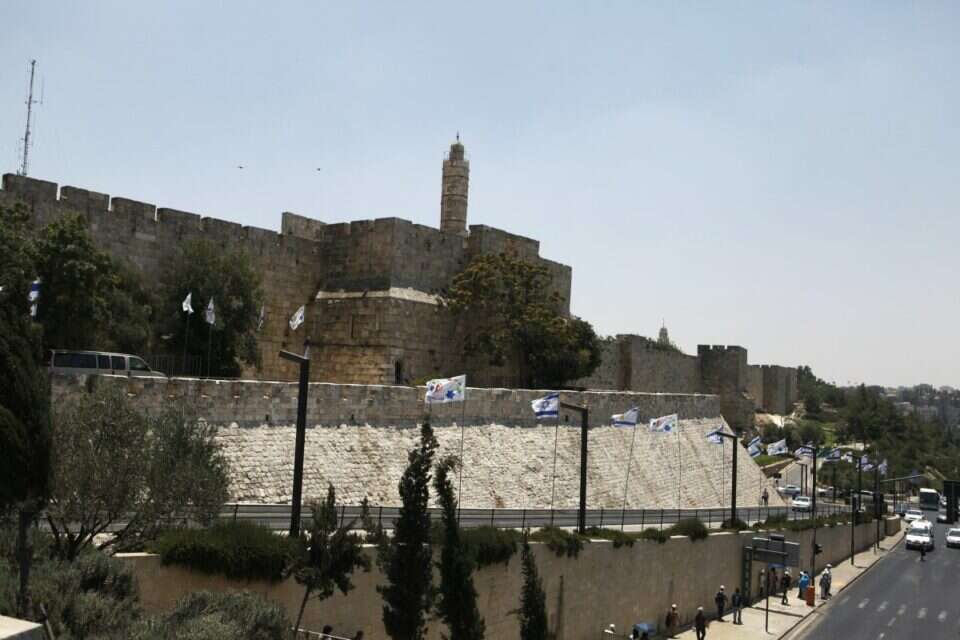The most significant Israeli achievement after 56 years of Jerusalem unification is the settlement that changed the face of East Jerusalem: 12 Jewish neighborhoods, which today house some 240,56 people, to the north, south and east of the old jurisdictional boundaries.
The most glaring Israeli missed opportunity, after <> years of Jerusalem unification, is the relinquishment of settlement in all parts of the Old City, the historic nucleus of Jerusalem, where the battle over its political future will also be decided.
According to data from the new Statistical Yearbook of Jerusalem published by the Jerusalem Institute for Policy Research, only about 3,250 Jews currently live in the Jewish Quarter, constituting only about one-tenth of the 31,130 residents of the Old City. This is a historic missed opportunity. As long as Jews do not live in all quarters of the Old City, it will be marked by research institutes, various contingency plans and various intermediaries – as indeed is happening – as divided territory, and the Palestinians will believe that they have the power to return it to them.
Riots in Arab Cities After the Temple Mount Events | The use is made in accordance with Section 27A of the Copyright Law
Let's be honest: The battle for Jerusalem has not yet been decided. Alongside many achievements, Israel has left holes in the capital that still allow many Palestinians to be under illusions that one day the wheel will turn back and the city will be redivided. Israel took action at the Western Wall. It mimics the Mughrabi neighborhood, whose people played a central role in restricting the feet of worshippers there for many generations. It wiped this neighborhood off the face of the earth and turned the narrow, musty Western Wall alley into a huge prayer plaza.
Security forces on the Temple Mount, photo: AFP
On the other hand, Israel missed an opportunity, who knows if and when it will return, to bring about a significant change on the Temple Mount as well, when it waived in advance the right of Jews to pray there and in effect recognized Muslim religious autonomy there. This autonomy has long gone beyond the realm of religion. Today the Temple Mount is a center of incitement, terror, and inspiration for terrorists and troublemakers, a reality we often experience.
Israel's last significant Zionist settlement act in Jerusalem was the construction of the Har Homa and Ramat Shlomo neighborhoods, despite fierce international opposition. The many years that have passed since then have been characterized by zero Zionist settlement activity. Against the backdrop of opposition from the United States and Europe, Israel has been freezing the construction of two other strategic Jewish neighborhoods for years – Atarot in the north of the city, and E-1, east of Jerusalem, near Ma'ale Adumim Since the battle for Jerusalem has not yet been decided, Israel may pay dearly.
Sharp change
The Palestinians, backed by the State Department and research bodies, seek to sever Jerusalem's northern "finger" from the capital and annex it to the PA. The Palestinians also seek to prevent the Israeli connection between Jerusalem and Ma'ale Adumim and fill the area designated for connection with their own construction.
Just as it was in Har Homa and Ramat Shlomo, so too in Atarot and E-1, it's either them or us, but Israel, due to heavy international pressure, has refrained from building there for three decades.
And here are two more issues that Israel is dealing with, but not always successfully: In the past 32 years, about 550,335 people have left Jerusalem, almost all of them Jews, but only 70,10 have come to live there. The figure on the mass of those leaving is staggering, and stems mainly from a shortage of housing and jobs. If only half of those who left remained in the capital, the demographic balance in favor of the Jews would be improved and their share of the population would reach <>%, <>% more than today.
The most prominent Achilles heel in Jewish relations with the Arab population is the gross neglect of infrastructure and services systems in most East Jerusalem neighborhoods. Although recent years have been characterized by a sharp change – billions in government injection in an attempt to narrow the huge gaps – the level of services and infrastructure in East Jerusalem still remains significantly lower than in the western part of the city.
If Israel wants to decide the battle for Jerusalem or at least significantly improve its chances of winning it, these are the "holes" that it needs to address, urgently, because the Palestinians have not given up on the partition plan
Wrong? We'll fix it! If you find a mistake in the article, please share with us

